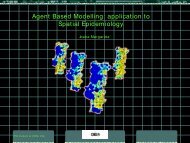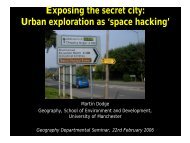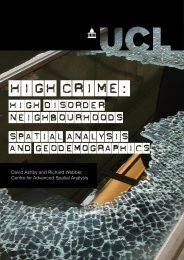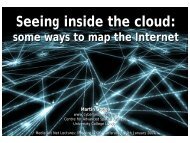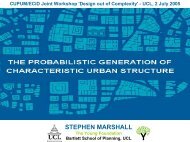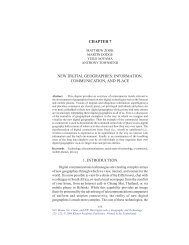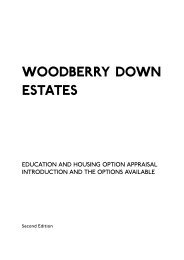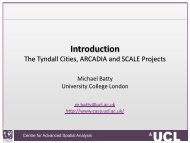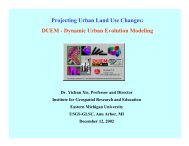Urban Simulation: Methods, Models and Planning Applications
Urban Simulation: Methods, Models and Planning Applications
Urban Simulation: Methods, Models and Planning Applications
You also want an ePaper? Increase the reach of your titles
YUMPU automatically turns print PDFs into web optimized ePapers that Google loves.
Lecture 5: L<strong>and</strong> Use Transportation <strong>Models</strong> 2: Discrete Choice Theory,Entropy‐Maximising <strong>and</strong> Utility MaximisingLecture 6: Integrated Comprehensive <strong>Models</strong>: Lowry <strong>Models</strong>: LUTI modelsLecture 7: Contemporary <strong>Urban</strong> L<strong>and</strong> Use <strong>Models</strong> ILUTE <strong>and</strong> <strong>Urban</strong>Sim:Disaggregation of Model StructuresLecture 8: Integrated Assessment: The Tyndall <strong>Models</strong> for Greater London:Topical Issues of Climate Change <strong>and</strong> Energy Predictions in <strong>Models</strong>Lecture 9: Cellular Automata Modelling: Principles of Cell Space <strong>Simulation</strong>:Lecture 10: Modelling <strong>Urban</strong> Morphology: Fractal GeometryLecture 11: Agent‐Based <strong>Urban</strong> <strong>Models</strong>: Individual Based <strong>Models</strong>: Ideasabout Dynamics <strong>and</strong> Movement: Pedestrian <strong>Models</strong>Lecture 12: Using <strong>Models</strong> in <strong>Planning</strong>: <strong>Planning</strong> Support SystemsCentre Centre for Advanced for Advanced Spatial Spatial Analysis, University College London
List of Topics1. Population Density. Working out, plotting, examining <strong>and</strong> commentingon population density variation with respect to distance in a large cityusing a small number of zones (~10 or so).2. Residential or retail location modelling using a simple program providedfor you, again with a small number of zones defining a large city3. Examining population size distributions in a large city using a largernumber of zones, or taking cities in Japan from the Population census<strong>and</strong> examining their size <strong>and</strong> frequency4. Exploring agent‐based models using one model from the Netlogo suiteof models <strong>and</strong> commenting on its structure with respect to how themodel works.Centre Centre for Advanced for Advanced Spatial Spatial Analysis, University College London
The Course Web PageCopies of the Powerpoints as PDFsLecture ReadingsAssignments <strong>and</strong> WorkshopsSoftwarehttp://www.casa.ucl.ac.uk/rits/Centre Centre for Advanced for Advanced Spatial Spatial Analysis, University College London




